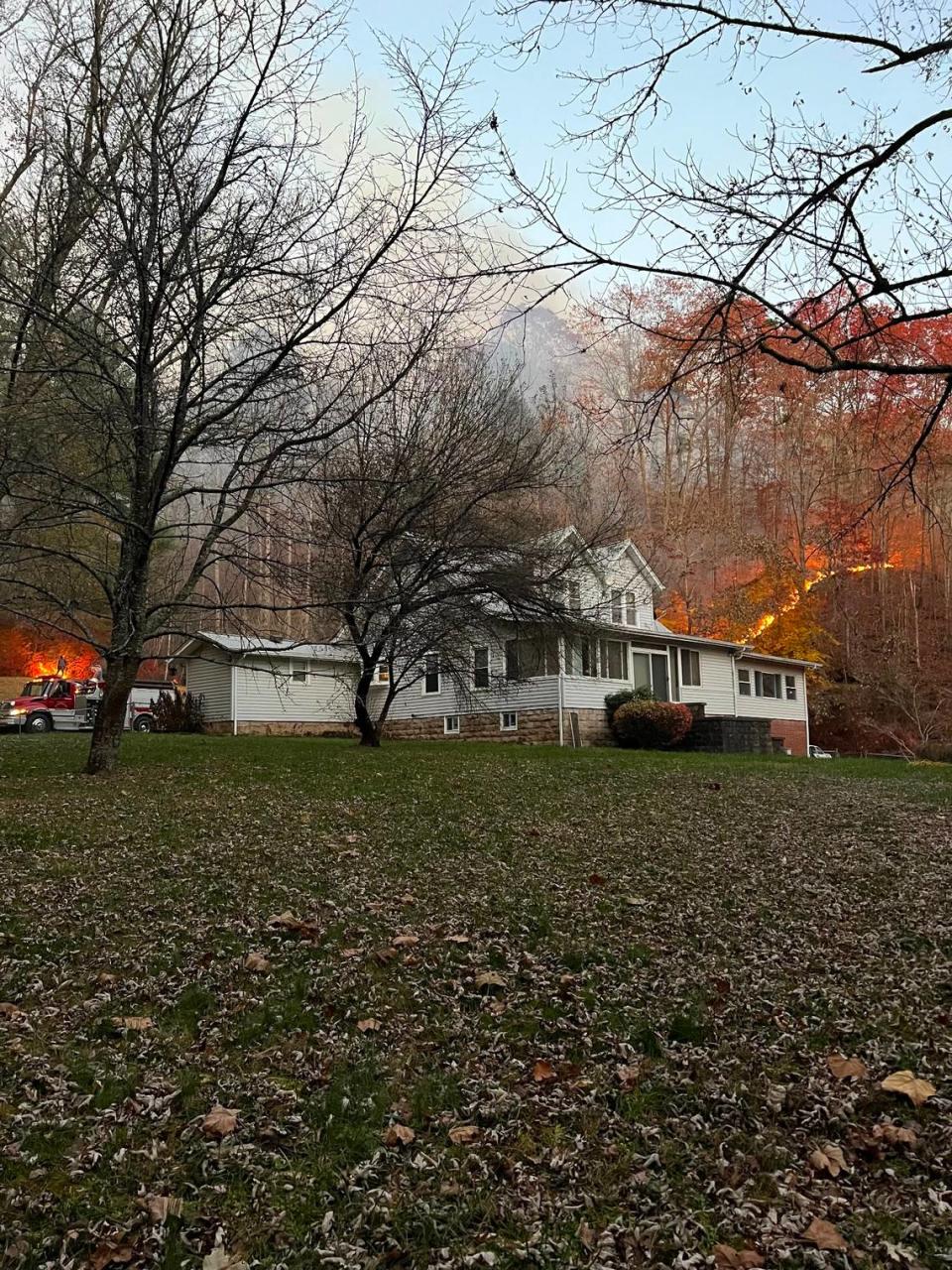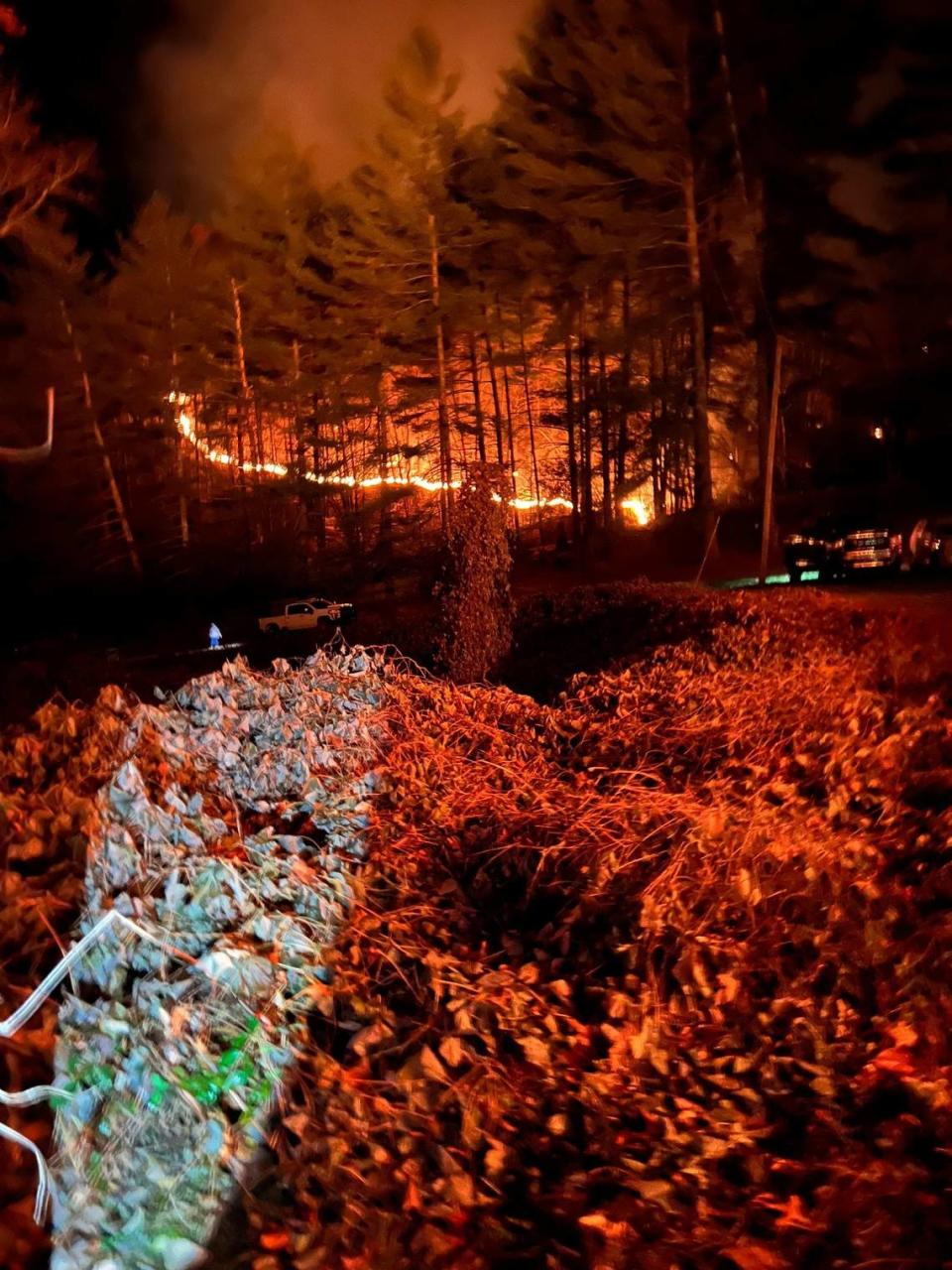State of emergency declared as thousands of acres burn in Eastern Kentucky wildfires
- Oops!Something went wrong.Please try again later.
Gov. Andy Beshear declared a state of emergency Thursday as crews have spent the past week battling thousands of acres of wildfires across multiple Eastern Kentucky counties.
Sixty-seven separate fires were burning in Kentucky Thursday afternoon, covering roughly 13,000 acres of land, said Steve Kull, an environmental scientist consultant with the Kentucky Division of Forestry. Most of those blazes were concentrated in southeastern Kentucky, with Harlan, Knott, Perry and Pike counties seeing the worst of it.
The fire in Breathitt County, known as the “Press Howard Fire,” has almost been completely contained, according to the Herald-Leader’s reporting partner, WKYT.
“It is so smoky here in the morning, you can’t hardly see to drive,,” said Steven Hatfield, chief of the volunteer Sunshine Fire Department in Harlan County, where the local county declared a state of emergency days ago.
“It’s like a thick fog where the smoke flooded down overnight.”
At night, the bright flames make the local hills look like a “war zone,” Hatfield said.
Of the 67 fires burning across the Commonwealth, 31 were active and 36 were contained, meaning containment lines are halting their spread, the state said. Another 44 fires were listed as controlled, meaning they no longer risk escaping control lines.
At least a dozen counties had active burn bans Thursday afternoon.
The state of emergency declared by the governor allowed state officials to access resources like Kentucky Emergency Management and Kentucky National Guard.
“We are taking action to make sure that Kentucky families and communities have the resources they need,” Beshear said in a news release. “We appreciate everyone on the front lines stepping up to fight the fires, and we pray for their safety and that these fires can be put out quickly.”
No official evacuations have been ordered, Kull said, but “a lot” of structures have been threatened by the fires. Some unoccupied or overgrown structures have been burned, but local volunteer fire departments have worked to protect endangered buildings.
The amount of fires coupled with drought conditions across Eastern Kentucky have taxed state and local resources to the point where several crews from forestry departments in Oregon, Idaho and Utah were either on the ground or en route to Kentucky, Kull said.
Since the beginning of November, 15,000 acres have burned in Kentucky. The state’s worst wildfire year of the past decade was 2016, when over 71,000 acres burned, Division of Forestry data shows.

What causes the fires?
According to the Division of Forestry’s online wildland fire map, individual blazes across the region range from a couple acres to over 2,000. The fires burning in Eastern Kentucky are generally “surface fires,” which live off fuels like leaf litter, dust and other flammable materials close to the ground. They typically don’t burn into the crowns of trees.
While there wasn’t yet an official cause for the fires, Kull said initial investigations are in line with what’s typical. Historically, 99% of wildland fire in Kentucky is caused by humans, whether that be through arson or an outdoor burn done without precaution.
“If anybody has any kind of information on a potential arsonist or someone in the area, contact local law enforcement, state police, and we’ll try and get them caught,” Kull said. “The more of those we can catch the fewer fires we’ll have out there.”
Agencies from Idaho, Oregon are coming to help fight Kentucky wildfires
Battling the blaze
For Hatfield, this week may have been the most tiring in his 27-year firefighting career. For the past six days, his 38-member department has contained blazes for nearly 24 hours a day.
“I have not experienced anything of this scale as far as being this amount of time and amount of fires,” Hatfield said in a phone interview Thursday between runs to fires.
The Sunshine Fire Department responded to the first forest fire call on Nov. 3. When they arrived, they found two separate fires.
“That’s what started the ball rolling,” Hatfield said, noting they’ve faced nine total fires leading up to Thursday morning.
They worked one blaze for close to 23 hours, he said. Wednesday night, they protected structures for nine hours.
Water isn’t always available in remote areas, so containing wildland fire starts with removing fuel in front of the fire, Kull said. Fire crews build a “containment line” encircling the fire by removing organic material with leaf blowers and fire rakes. They dig down to bare earth or whatever won’t burn, using bulldozers when possible.
With the line established, fire crews light a separate fire that burns back toward the encircled fire and exhausts the available fire fuel, Kull said.
“We kind of fight fire with fire,” he said.

Five fires were near the community of Smith. Another large one was fought near Catrons Creek and the most recent was near the community of Crummies, Hatfield said. He wanted to thank everyone across the community who has shown support, noting that some have passed out food and drinks to the firefighters.
“We went several nights where nobody even got to go to eat anything,” Hatfield said. “We were just so covered up.”
The state Division of Forestry has worked the fires alongside the Sunshine department. The Corbin Fire Department sent five people to assist them Tuesday. Hatfield looked forward to the arrival of the Oregon crews to “give some relief to everybody.”
The forecast
True relief will come with rain, Hatfield said. But a significant enough amount to quell the blazes may not be coming soon.
There’s a slight chance for some precipitation Thursday evening into early Friday, Kull said.
“It’ll help,” Kull said. “But it’s not going to be a significant amount to put the fires out.”
Reporter Chris Leach contributed to this story.

